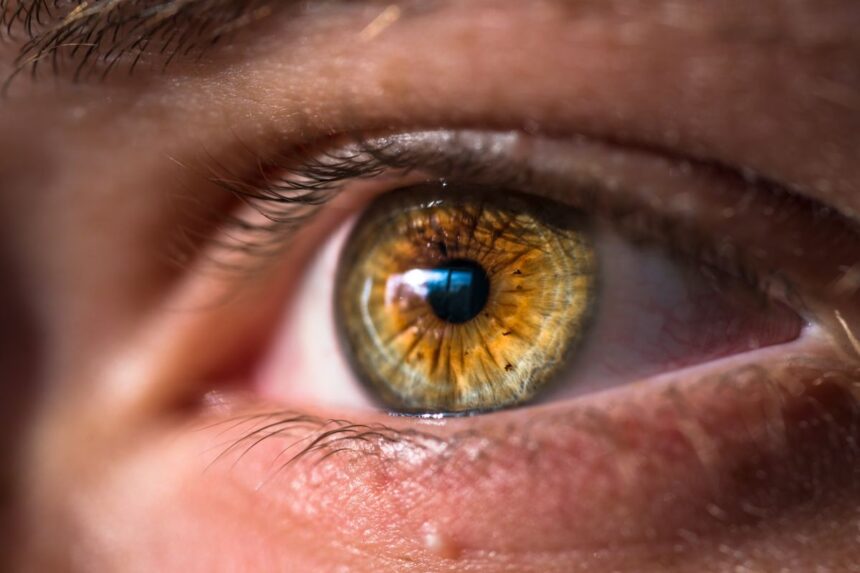Hazel eyes are a captivating and unique eye color that is often described as a mixture of brown, green, and sometimes even gold or amber hues. Unlike other more uniform eye colors, hazel eyes can appear to change depending on lighting, surroundings, and clothing, adding to their mystique. People with hazel eyes are often admired for the depth and complexity of their eye color. But what exactly are hazel eyes, and what makes them so special? Let’s dive in and explore the characteristics and genetics behind this intriguing eye color.
What Makes Hazel Eyes Unique?
Hazel eyes are characterized by their variable mix of colors, usually a combination of brown and green, with a subtle golden or amber tint. This blend of colors can give hazel eyes an appearance that shifts depending on the light or angle of view. For example, in certain lighting, hazel eyes may appear more greenish, while in other environments, they may seem more brown or golden.
One of the most striking features of hazel eyes is their ability to change appearance throughout the day. This happens because of how light interacts with the pigments in the eye and how the iris, the colored part of the eye, reflects and refracts light.
The Genetics Behind Hazel Eyes
Eye color, including hazel, is determined by genetics, specifically the combination of genes inherited from both parents. The color of your eyes is primarily controlled by variations in the OCA2 and HERC2 genes, which influence the amount and type of pigments (like melanin) in the iris. These pigments can range from brown to blue, and in the case of hazel eyes, they can create the unique mixture of brown and green hues.
Hazel eyes are generally a result of a moderate amount of melanin in the front layer of the iris, which combines with the scattering of light. Because of the unique genetic makeup, having hazel eyes is relatively rare compared to other eye colors like brown or blue.
How Do Hazel Eyes Compare to Other Eye Colors?
Hazel eyes differ from other common eye colors in several ways:
- Brown Eyes: Brown eyes are the most common eye color globally and are due to higher levels of melanin in the iris. Hazel eyes, on the other hand, contain a mixture of brown and green or golden tones, which give them a more complex and dynamic appearance.
- Green Eyes: Green eyes, though also a rare eye color, usually consist of a higher concentration of a yellowish pigment called lipochrome. While both green and hazel eyes can contain green hues, hazel eyes typically have more brown or gold elements mixed in.
- Blue Eyes: Blue eyes are caused by a lack of melanin in the iris, with the blue color resulting from light scattering. Hazel eyes, however, are more pigmented, giving them a deeper and more vibrant appearance.
- Amber Eyes: Amber eyes are often described as having a golden or coppery tint, which is different from the mixed colors in hazel eyes. Though hazel eyes may sometimes have a golden tint, amber eyes tend to be more uniform in color.
What Causes the Color Change in Hazel Eyes?
The appearance of hazel eyes can change depending on factors such as:
- Lighting: Exposure to different lighting conditions can highlight different colors in the iris. In bright sunlight, the green or golden tones of hazel eyes may become more prominent, while dimmer light can bring out the brown tones.
- Clothing and Surroundings: Certain colors of clothing and surroundings can also influence how hazel eyes appear. For example, wearing green or earth tones may make the green or amber hues in hazel eyes more noticeable.
- Emotional Changes: Interestingly, emotions can also affect the appearance of hazel eyes. When a person feels excited, stressed, or happy, their pupils may dilate, changing how the eye color is reflected.
Is There a Health Benefit to Having Hazel Eyes?
From a health perspective, there is no significant advantage to having hazel eyes compared to other eye colors. However, lighter eye colors like hazel or green tend to have less pigment, which means they may be more sensitive to light. This can increase the likelihood of developing eye conditions such as photophobia, which causes discomfort in bright light. People with hazel eyes should take care to protect their eyes from excessive sun exposure by wearing sunglasses with UV protection.
How Rare Are Hazel Eyes?
Hazel eyes are relatively rare when compared to other eye colors. Approximately 5% to 8% of the world’s population has hazel eyes. The distribution of hazel eyes is more common in people of European descent, especially those from regions such as the United States, the Mediterranean, and parts of Northern Africa. However, hazel eyes can be found in people of various ethnic backgrounds.
Can Hazel Eyes Be Created Through Contacts or Surgery?
While you cannot “naturally” change your eye color to hazel unless you were born with this color, there are methods to simulate hazel eyes. One of the most common ways is through the use of colored contact lenses. These lenses are available in a variety of shades, including hazel, and can give the appearance of hazel eyes without altering your natural eye color.
There is also an eye surgery known as iris implant surgery, which can permanently alter the color of your eyes, but this procedure is generally not recommended due to its potential risks and complications.
Conclusion
Hazel eyes are a fascinating and rare eye color characterized by a dynamic blend of brown, green, and sometimes amber or gold. This color combination gives hazel eyes the unique ability to change appearance depending on lighting, surroundings, and even emotions. Though relatively uncommon, hazel eyes are a beautiful trait that adds to the diversity of human eye color. Understanding the genetics behind hazel eyes and their changing nature only adds to their allure.
While there is no significant health benefit to having hazel eyes, those with lighter-colored eyes may need to take extra precautions to protect their eyes from the sun. If you don’t have hazel eyes but are fascinated by the color, you can always try contact lenses to temporarily enjoy this unique eye color.


